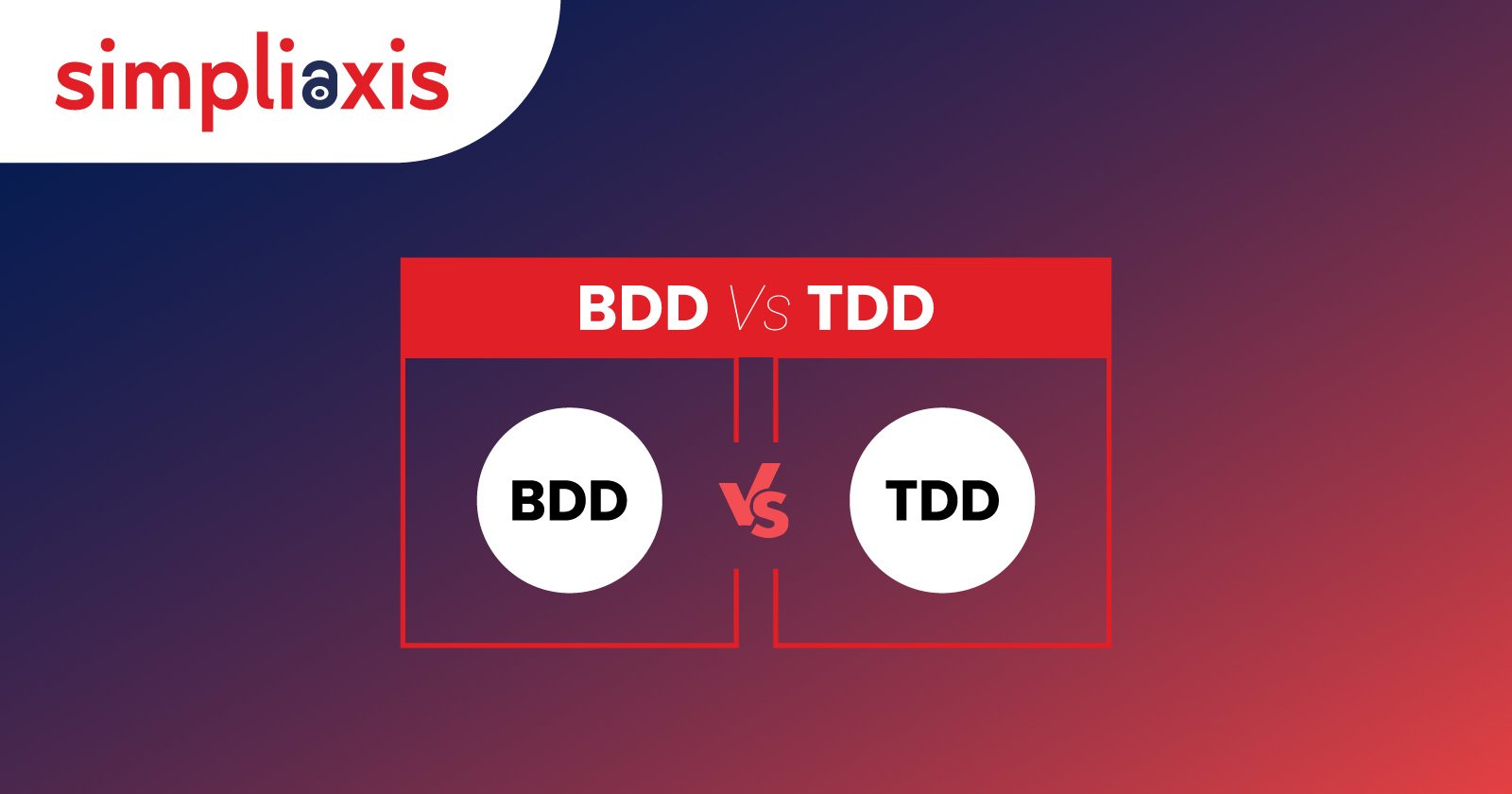Over the last couple of years, the software development process has moved from a Waterfall approach to Agile methodology. Since Agile development involves continuous change, the overall testing process has also been altered so that these frequent changes will avoid introducing newer bugs or even breaking the functionality of the entire application.
Most software developers today are highly aware of procedures such as behavior-driven development (BDD) and test-driven development (TDD). The actual reality is that – both of these methods have their own merits & demerits. That’s why we will explore the significant differences between these methodologies to help you understand each technique better and assist you in making a better decision.
What Do You Mean By Test-Driven Development (TDD)?
TDD is a software development process that involves writing automated test cases before writing the various functional segments of the code. This method is highly popular in Agile methodologies because it can quickly deliver a shippable product during the Sprint cycle.
The main idea behind TDD is to learn whether the code is valid for use. If the test code fails, the intention is to modify or even write fresh code in case the test scenario fails.
TDD can be divided into the following few steps:
- The developer first writes an automated test case based on the requirements and needs.
- The whole Development Team then test-runs these automated scripts. Sometimes, these tests pass, other times, they fail.
- The team then re-factors in the code, so that the test can pass successfully.
Benefits Of TDD
- Reduces the total amount of work required to rework the code.
- Assists in exploring errors or bugs very fast.
- Faster feedback is received.
- Promotes the creation of better & cleaner designs.
- Improves the productivity of the entire Development Team.
- Improves team collaboration and sharing.
- Enhances the confidence of the entire Development Team.
- Easy to maintain and flexible code is developed.
What Do You Mean By Behaviour Driven Development (BDD)?
BDD can be defined as a software development procedure that helps define user behavior before writing the functional elements of the code or even the automation code/scripts. This technique is also utilized during Agile project development, as it can ensure a shippable product at the end of the team Sprint.
Most of the time, the ‘Given-When-Then’ approach is used for writing the test case scenarios. An example for better understanding would be:
- Given that the login credentials have been entered successfully by the user.
- When the user clicks the login icon.
- Then, the successful validation message should be displayed. BDD includes the following steps:
- Firstly, the Product Owner defines the user is overall behavior in a simple language, such as in English.
- It is then converted to automated scripts and, thereby run against the functional code.
- Functional code is written by the Development Team to make sure that the automated scripts run successfully.
- Refactoring and organization of the final code are done to deliver the product.
Benefits Of BDD
- Due to the use of non-technical language, the process can reach a wider audience.
- Always focus on the way the system should behave, not only from the developer’s perspective but also the customer’s perspective.
- It’s highly cost-effective.
- Not much effort is required to verify any defects post-development.
TDD vs BDD – The Real Differences
1. The Process
One of the biggest differences between these two is that in BDD; you’re simply looking for behavior. For instance, what will the system do under a specific condition?
On the other hand, in TDD, you have to perform a test for a method, which will have its own set of conditions. And when the system evolves, the tests might give you false results.
In a nutshell, in TDD you rarely care about the output because you’re only concerned about running the system in a specific manner. But, in BDD, how you come up with the output doesn’t matter. The only thing that will matter is whether the output is correct with the given condition.
2. The Feedback And Communication
Regarding feedback and communication, BDD will have an edge over TDD. As the overall behavior in BDD is written in simple, plain, descriptive English, clients will be able to understand the test quite well, thereby providing their feedback instantly. As a result, more lines of communication will be opened up during the project development.
The incorporation of useful feedback can further help improve the design and tests of the software being developed.
However, in TDD, only the team of developers can understand the test scenario, which will indeed limit the amount of communication that is to be done. However, this procedure will ultimately deliver better-quality code.
3. The Perspective
Regarding perspective, in BDD, the test can satisfy both the customers and the developers. On the other side, in TDD, the test will only be able to satisfy the team of developers and the code they create.
Conclusion:
Understanding each of the above-mentioned methods and how they function will quickly help developers, along with other individuals involved in software development, figure out the best strategy for their use case scenario. Simpliaxis offers specialized training in both Behavior-Driven Development training (BDD) and Test-Driven Development (TDD) training, empowering developers to master these methodologies and leverage them effectively in their projects.
It should come as no surprise that BDD is simply a better approach than TDD. But, you should never forget that BDD actually evolved from TDD and, therefore, eliminated its disadvantages. Therefore, it’s recommended that developers should implement both methodologies so that they can enjoy the benefits of both procedures while also meeting their specific requirements in the most efficient manner possible.
















